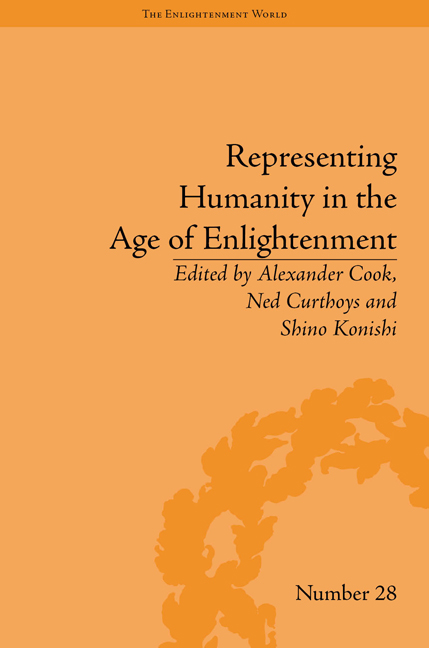Book contents
- Frontmatter
- CONTENTS
- Acknowledgements
- Dedication
- List of Contributors
- List of Figures
- The Science and Politics of Humanity in the Eighteenth Century: An Introduction
- Part I Humanity and the Civilizing Process
- 1 Representing Humanity during the French Revolution: Volney's ‘General Assembly of Peoples’
- 2 Representing Woman: Historicizing Women in the Age of Enlightenment
- 3 Sheer Folly and Derangement: How the Crusades Disoriented Enlightenment Historiography
- 4 Turning Things Around Together: Enlightenment and Conversation
- 5 Moses Mendelssohn and the Character of Virtue
- Part II Encountering Humanity
- Part III The Limits of Humanity
- Notes
- Index
2 - Representing Woman: Historicizing Women in the Age of Enlightenment
from Part I - Humanity and the Civilizing Process
- Frontmatter
- CONTENTS
- Acknowledgements
- Dedication
- List of Contributors
- List of Figures
- The Science and Politics of Humanity in the Eighteenth Century: An Introduction
- Part I Humanity and the Civilizing Process
- 1 Representing Humanity during the French Revolution: Volney's ‘General Assembly of Peoples’
- 2 Representing Woman: Historicizing Women in the Age of Enlightenment
- 3 Sheer Folly and Derangement: How the Crusades Disoriented Enlightenment Historiography
- 4 Turning Things Around Together: Enlightenment and Conversation
- 5 Moses Mendelssohn and the Character of Virtue
- Part II Encountering Humanity
- Part III The Limits of Humanity
- Notes
- Index
Summary
In 1803 Mary Hays published her groundbreaking historical study of women through the ages, Female Biography. This work, made up of 288 studies of individual women's lives, has been regarded by scholars as significant for two principal reasons. First, it has usually been described as the first collective biography of women to be written by a woman in English. The genre of collective biography reached its zenith in the nineteenth century and women would be formidable contributors to its success. Victorian collective biography essentially functioned as prosopography, that is, as texts that sought to codify gender appropriate behaviour through biography. Hays's ‘first’ in this context has ensured that for the most part Female Biography has been read as anticipating Victorian works of prosopography, and hence represented a retreat from the scandalous, and a retrograde shift in her politics. Most critics who have engaged with Hays's oeuvre have assumed that her move from novels of self-disclosure to works of collective biography meant a rejection of her early radicalism and a recantation of her commitment to Wollstonecraftian feminism.
This shift marks the other reason why Hays's Female Biography has been regarded as significant. That is, it has become a watershed moment in the history of feminism, proof of a more general disavowal of Wollstonecraft in the wake of the scandal that erupted after her death and upon the publication of William Godwin's Memoirs of the Author of A Vindication of the Rights of Woman in 1797.
- Type
- Chapter
- Information
- Representing Humanity in the Age of Enlightenment , pp. 27 - 40Publisher: Pickering & ChattoFirst published in: 2014



